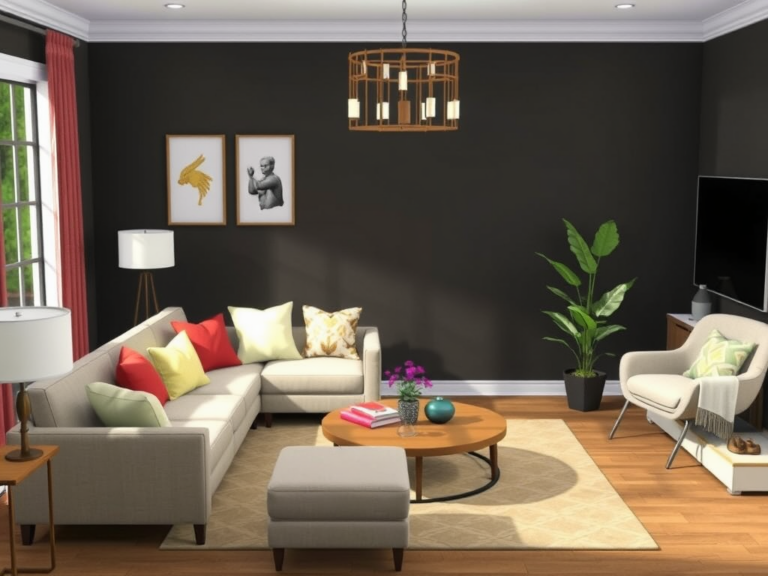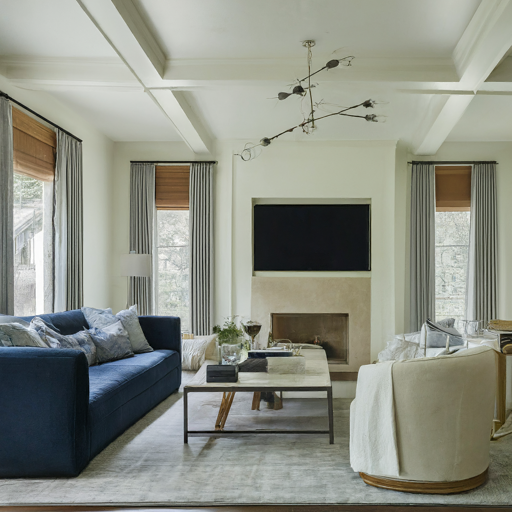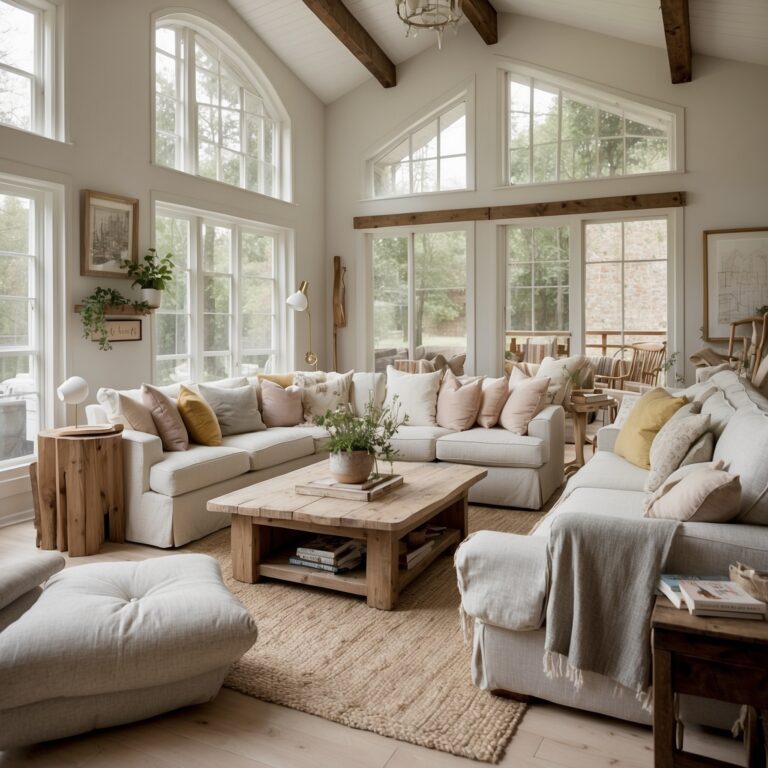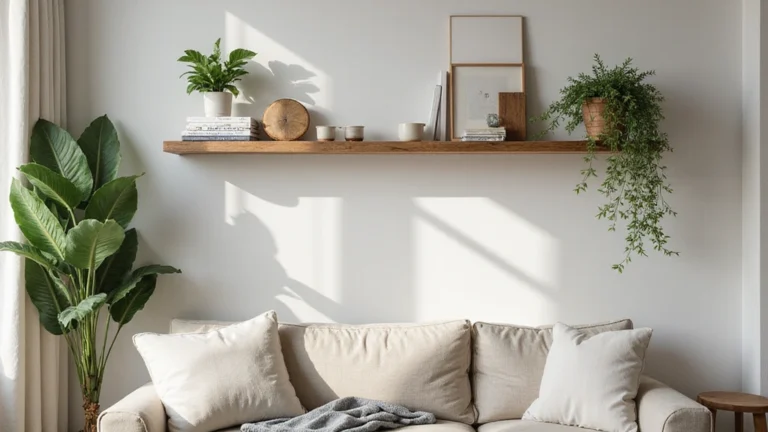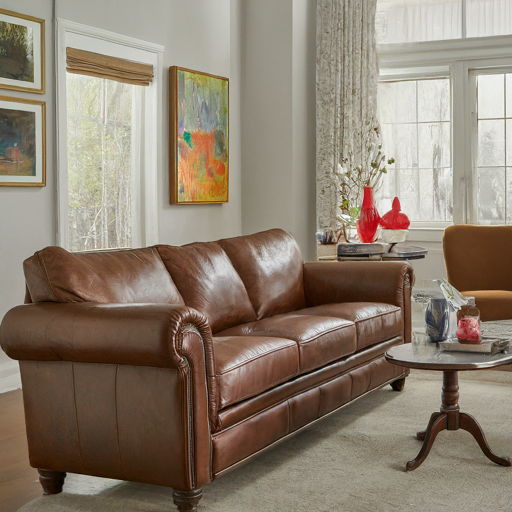20 Best Paint Colors for a Classroom That Actually Work

Picking the right paint color for a classroom isn’t just about making the walls look pretty.
It’s about creating a space where kids actually want to learn and teachers don’t feel like they’re trapped in a beige box all day.
Believe me, I’ve seen classrooms that feel like a prison cell (grey, lifeless, and depressing), and I’ve seen ones that feel alive and full of energy just because of the right color choices.
So, if you’re a teacher, a school planner, or even just the unofficial “let’s-fix-this-classroom” person, this list of 20 best classroom paint colors will help you out.
1. Soft Blue – Calm and Focused
Blue is the classroom MVP. Why? Because it helps kids stay calm and focused. A light sky blue works wonders when you want to reduce anxiety and boost concentration.
Ever noticed how hospitals use blue tones? Same idea. Kids get less fidgety, and teachers get fewer headaches (bonus, right?).
2. Warm Beige – Neutral but Not Boring
If you’re not ready to commit to bold colors, warm beige is your safe bet. It keeps the space light and neutral without making it look like a bland waiting room.
Pair it with colorful bulletin boards and you’ve got balance. It’s like the background music in a coffee shop—pleasant, subtle, but never distracting.
3. Light Green – Fresh and Relaxing
Light green brings the outdoors in. It’s soothing, reduces stress, and even boosts creativity. I once painted a reading corner in sage green, and suddenly it became the most popular spot in the room. Coincidence? I think not.
4. Pale Yellow – Sunshine Without the Sunglasses
Want a cheerful vibe? Go with pale yellow. It adds warmth and energy without being blinding.
Too much yellow can cause overstimulation (read: kids bouncing off the walls), but a pale buttery shade makes the room feel happy and welcoming.
5. Classic White – Bright and Open
Yes, white can work. Before you roll your eyes, hear me out. White walls make classrooms look bigger and brighter, which is especially handy if your room has limited natural light.
Just don’t leave it plain—add pops of color through posters and student artwork, or else you’ll end up with “dentist office chic.”
6. Lavender – Calm and Soothing
Lavender has a soft, peaceful vibe. It’s especially great for younger grades where you want to reduce stress and create a nurturing environment.
It’s subtle enough not to overwhelm but still adds personality. Think of it as the “teacher with a calm voice” of classroom colors.
7. Soft Gray – Modern and Flexible
Soft gray sounds boring, but it’s not if you do it right. It’s neutral enough to let your classroom décor shine but modern enough to feel intentional.
Teachers love it because you can switch themes every year without repainting. One year jungle theme, next year outer space—the gray still works.
8. Ocean Teal – Creative and Fun
Teal is that sweet spot between blue and green. It’s refreshing, energizing, and creative without being too loud.
If you want kids to feel engaged but not overstimulated, teal is your color. Just don’t paint the whole room teal—it works best as an accent wall.
9. Peach – Warm and Inviting
Peach gives the room a soft warmth that makes it feel welcoming. It’s friendly without being distracting.
I once walked into a classroom painted peach, and it honestly felt like stepping into a hug. Cheesy, but true.
10. Mint Green – Crisp and Cheerful
Mint green is like the cool younger cousin of sage. It’s fresh, cheerful, and energizing without being overwhelming.
Kids love it because it feels lively. Teachers love it because it doesn’t give off “neon highlighter” vibes.
11. Soft Coral – Playful and Bright
Coral brings playfulness without going full-on crayon box. It’s especially great for younger grades where you want to create a fun, stimulating environment.
Pair it with white trim for balance and you’ve got a lively but still classy look.
12. Denim Blue – Classic and Dependable
Denim blue works for older grades. It’s deeper than sky blue, which gives a more grounded, mature feel.
Perfect for middle or high school classrooms where you don’t want things too “kiddy.”
13. Light Taupe – Neutral with Depth
Light taupe feels warm and cozy while still being neutral. It’s like beige’s more sophisticated sibling.
Teachers who want a modern, flexible look love taupe because it works with literally every accent color.
14. Pale Pink – Gentle and Comforting
Before you roll your eyes, pale pink isn’t just for nurseries. A soft blush shade adds warmth and comfort to classrooms, especially younger grades.
The trick? Keep it subtle so it feels calm, not Barbie Dreamhouse.
15. Aqua – Energetic but Balanced
Aqua feels bright, energetic, and fun, but unlike pure blue, it has a cheerful vibe that makes the classroom feel alive.
If you want a space where kids feel awake and ready to learn, aqua might be your best bet.
16. Charcoal Accent – Bold but Controlled
Now, I wouldn’t recommend painting a whole classroom charcoal, unless you want it to feel like a cave. But as an accent wall, charcoal looks amazing.
It adds depth, makes colorful displays pop, and gives a modern feel. Just… don’t overdo it.
17. Sage Green – Timeless and Calm
Sage green deserves its own spotlight. It’s calming, timeless, and works for every grade level.
It’s also one of those shades that teachers never seem to get tired of. Honestly, if classroom walls could take a deep breath, they’d probably turn sage green.
18. Buttercream – Soft and Uplifting
Buttercream is basically yellow’s less aggressive cousin. It’s warm, soft, and uplifting without the high energy of bright yellow.
Perfect if you want a cheerful classroom without needing sunglasses.
19. Sky Blue – Light and Open
Sky blue makes rooms feel airy and spacious. It’s a color that boosts creativity while keeping the environment relaxed.
If you want kids to daydream a little (in a good way), this color works.
20. White with Bold Trim – Best of Both Worlds
If you can’t pick a color, go with white walls and bold trim (think navy, green, or red). It keeps the classroom bright but still adds personality.
It’s flexible, fun, and works with different décor themes. Honestly, it’s the lazy-smart teacher’s paint hack.
Tips for Choosing the Right Classroom Color
Okay, so now that you’ve got 20 options, how do you actually pick one? Here are a few quick things to keep in mind:
- Age group matters – Younger kids do better with brighter, cheerful tones; older kids need calmer, more grounded colors.
- Lighting changes everything – A color that looks bright in a catalog might look dull in a dim classroom. Always test a sample first.
- Balance is key – Too much bold color can overstimulate. Use accents instead of flooding the room.
- Durability counts – Choose washable paint. You know kids—walls will become art canvases eventually.
FAQs About Classroom Paint Colors
1. What’s the best paint color for focus in a classroom?
Soft blue or sage green usually help kids focus the most.
2. Which color makes a classroom feel bigger?
White, pale yellow, or sky blue make small classrooms feel more spacious.
3. Can bright colors be bad for learning?
Yes, if overused. Bright colors like red or neon shades can overstimulate kids.
4. What’s the safest choice if I can’t decide?
Go with a neutral like beige, light gray, or taupe. You can always add accents later.
5. Should I let students help pick the color?
If possible, yes! It makes them feel included and excited about their learning environment.
Conclusion
Choosing the right classroom paint color isn’t about following trends—it’s about creating a space where kids feel comfortable, engaged, and ready to learn. Whether you go with calming sage, cheerful yellow, or the ever-dependable sky blue, the key is to balance energy with focus.
So, what do you think? Ready to grab a paintbrush and finally ditch that sad beige wall that’s been haunting your classroom for years? Trust me, once you make the switch, you’ll wonder why you didn’t do it sooner.

